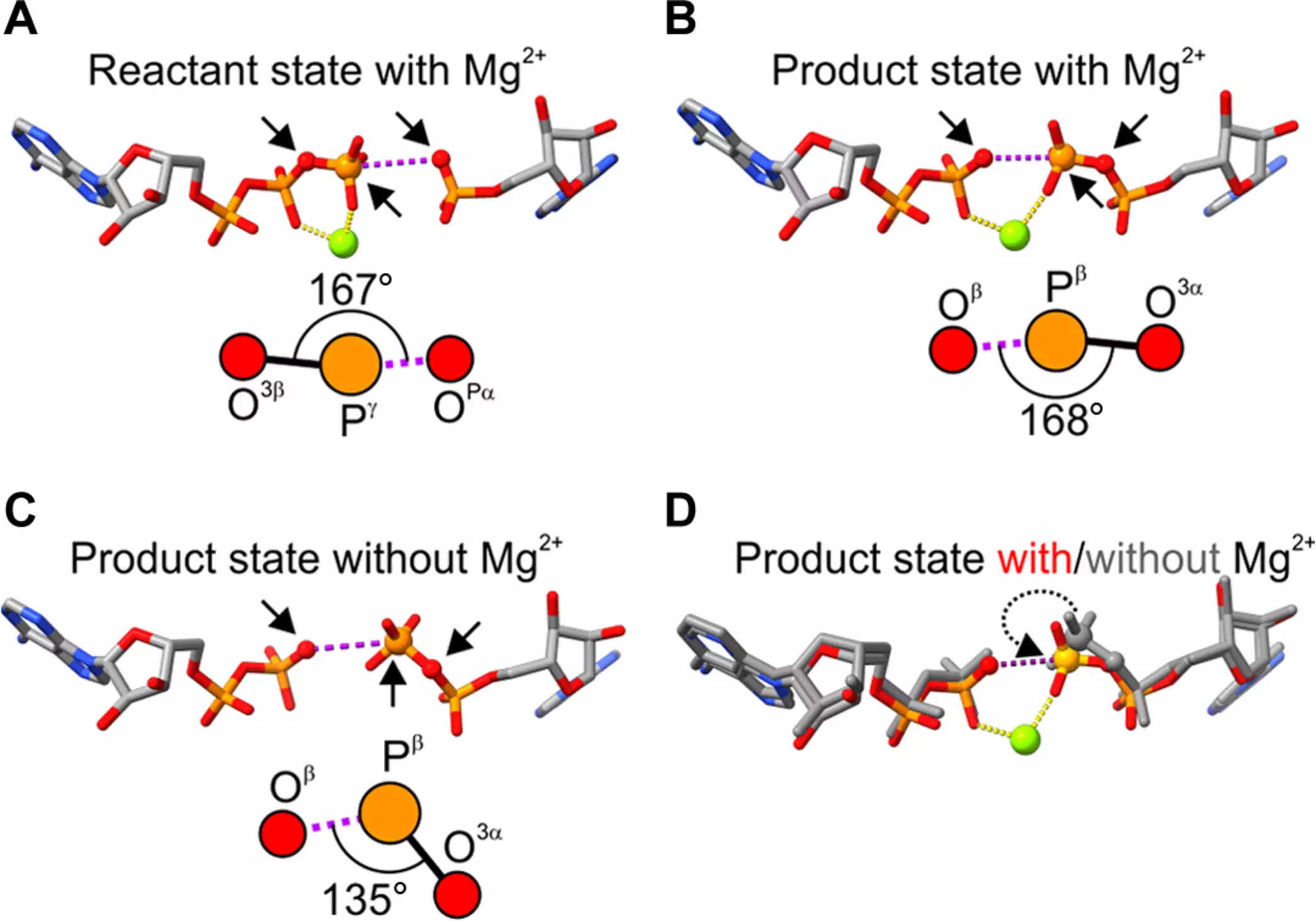Adenosine triphosphate (ATP) is often referred to as the cellular energy currency, vital for a multitude of biological functions ranging from muscle contraction to intracellular transport and even influencing infectious processes in bacteria. Without ATP, the fundamental processes that sustain life would collapse, underlining its significance. Researchers have made significant strides in understanding how ATP is synthesized, particularly focusing on the role of critical elements, such as magnesium. A recent study led by Professor Magnus Wolf-Watz at Umeå University has unveiled precise mechanisms that elucidate how magnesium enhances ATP synthesis, marking a monumental advancement in biochemistry.
ATP production primarily involves the action of adenylate kinase, an essential enzyme that converts adenosine diphosphate (ADP) and adenosine monophosphate (AMP) into ATP. For this process to be effective, magnesium ions are crucial. Researchers had previously recognized magnesium’s role in ATP dynamics; notably, it aids by influencing the electrostatic interactions that drive the biochemical reactions. However, the nuance within this catalytic process remained ambiguously understood until this recent study provided deeper insights into magnesium’s operational mechanics.
The Findings of the Study
The latest research establishes that, while magnesium’s electrostatic influence is vital, it alone cannot explain the swift production rates of ATP. The findings, published in the journal Science Advances, reveal that magnesium plays a more intricate role by physically altering the spatial configuration of the molecules involved. Specifically, the research indicated that the effectiveness of the enzyme adenylate kinase hinges on a precise orientation of AMP and ADP within the enzyme’s active site. When magnesium altered the angle at which these molecules interacted, an optimal arrangement was achieved, significantly enhancing the reaction rate.
The investigative team employed advanced crystallographic techniques, spearheaded by Professor Elisabeth Sauer-Eriksson, to visualize these molecular arrangements. This methodological approach allowed the researchers to observe how minute changes could lead to substantial catalytic effects.
The Structural Implications for Enzyme Functionality
In addition to geometric changes, the team, leveraging computational chemistry resources under the guidance of Kwangho Nam at the University of Texas at Arlington, expanded their findings to link these geometrical modifications to broader structural interpretations of the enzyme. It was revealed that slight adjustments in angle not only influence the interaction between AMP and ADP but also induce significant conformational shifts in the enzyme’s overall structure itself.
This correlation represents a crucial milestone in understanding enzyme mechanics, bridging a long-standing gap between structure and catalytic activity. For years, biochemists have sought to clarify how structural nuances within enzymes dictate their catalytic efficiency, and this research provides concrete evidence to affirm this relationship.
The broader implications of these findings resonate well beyond the confines of cellular energy production. Given ATP’s involvement in various biological modalities—from muscle physiology to cell signaling and potential therapeutic targets against bacterial infections—the discovery paves the way for novel biomedical applications. By harnessing this newfound understanding of magnesium’s role, scientists might develop more effective strategies to enhance ATP synthesis, or potentially target related biochemical pathways in diseases influenced by energy metabolism.
The illuminating research led by Professor Wolf-Watz and his international team offers groundbreaking insights into the catalytic role of magnesium in ATP production. By demonstrating how magnesium facilitates optimal molecular interactions and influences enzyme structure, the study advances our comprehension of critical biochemical processes that underpin life itself. Future investigations could leverage these insights to explore therapeutic applications, thereby harnessing the transformative potential of these findings to foster new innovations in medical science and biochemistry. As society continues to grapple with health challenges linked to energy metabolism, this research stands as a beacon for prospective scientific exploration and discovery.

